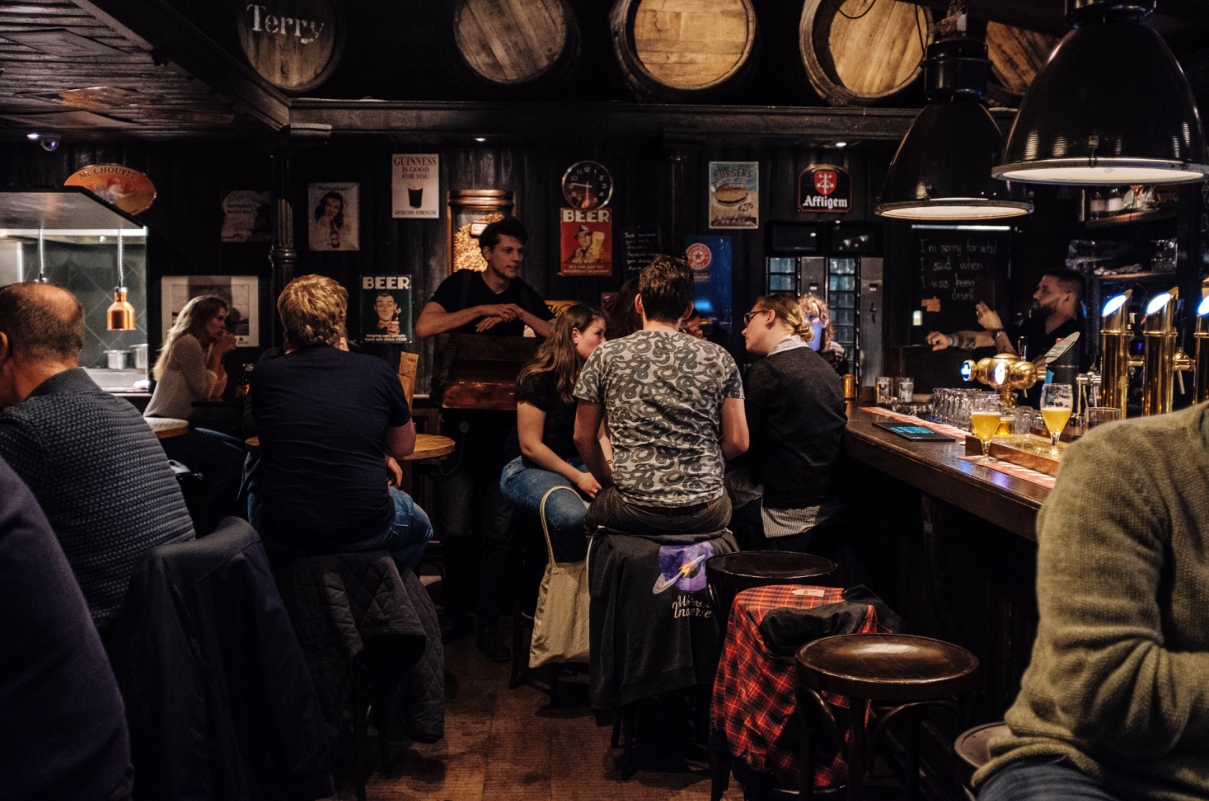March 2022

Research and Brews Cultivates Grad Student Conversation
Graduate students filter into a private room at a local brewery, as they do the third Wednesday of every month, to hear other graduate students talk about their research. At this “Research and Brews” event on February 23, two graduate students elect to take half an hour to present their research to an interested and forgiving audience.
Where academic research can sometimes feel like an island, this event allows students to make new connections and discuss findings with a curious audience.
This week’s presenters included Jaylen James, a fifth year PhD student in Material Science, and Morgan Thompson, a third year PhD student in Etymology.
James took the room on a deep dive into materials science. Funded by the Airforce and the recently established Space Force, his research focuses on predicting crack formation in a particular titanium alloy. This alloy has certain areas, called micro-texture regions (MTRs), that facilitate quicker crack growth. This can become problematic in mechanical components, like turbines, in which crack development is expected with use.
James explains that his research helps determine “how much of a crack is just through regular service and how much is from a crack going through a MTR.” He compares three mathematical models that predict crack growth through MTRs: 2-dimensional, 3-dimensional, and one termed “Expectation Maximization”.
“The difference between the three, after all this work, is that there’s not much of a difference” James summarizes. The audience laughs in solidarity and understanding—they’ve gotten similar ‘negative’ results from their own experiments. But James goes on to explain that this lack of difference only serves to support the use of crack prediction methods that are already in place. His findings support the existing body of research—and that’s a good thing.
Thompson engaged the audience in a dynamic exploration of the chemical warfare between plants and insects. She focuses on terpenes—which are aromatic (smelly!) compounds that plants use to defend themselves against herbivorous insects that try to eat them.
Thompson elaborates, “a bunch of different plants, nearly every single plant species, emit these terpenes, different chemical compounds—they’re ubiquitous”.
Plants release different defensive smells when attacked by different bugs, and other plants can ‘eavesdrop’ on this chemical conversation. If their neighbor puts up their defenses, they will often put theirs up, too! Plants can even use these smells to call in other insects to eat the insects that are feeding on them.
The research Thompson presented included the first evidence that zucchini plants produce difference smells depending on what kind of insects are eating them “that was pretty cool!” Thompson exclaimed.
She noted that when caterpillars in particular eat the zucchini leaves, it lowers the defenses of surrounding zucchini plants and allows the caterpillars to eat more. “And they’re pretty hungry!” Thompson says about the caterpillars, “they can eat a lot of leaf tissue!”
After the presentations, graduate students linger to have a beer and discuss plant defenses and crack formation with other attendees. A computer sciences masters’ student might talk with kinesiology and biochemistry PhD candidates, and they are able to find common ground through the shared experience of graduate school. They commiserate about the pitfalls of benchtop lab science and share tips on the best way to read a peer-reviewed journal article.
After so much pandemic-related disconnect, it’s nice to be able sit at a table and share ideas.